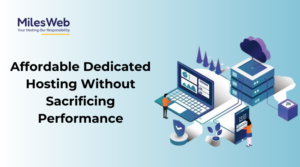In the digital age, educational websites have become vital tools for learning, offering resources and interactive experiences that can significantly enhance the educational journey. Creating an educational website, however, may seem daunting. This guide aims to demystify the process, combining professional insights with a touch of playfulness to empower you to launch an educational platform that enlightens and engages.
The Vision Behind Educational Websites
Educational websites fulfill a range of purposes, from providing supplemental learning materials to hosting comprehensive courses. Before diving into design and content, clarifying the website’s purpose will shape its development, ensuring it meets the needs of its intended users. Whether it’s to offer homework help, online courses, or interactive learning modules, understanding your audience and their learning goals is the first step to creating a website that truly educates.
Content is King
The heart of any educational website is its content. Quality, relevance, and engagement are critical. Developing content that resonates with your audience requires a deep understanding of their needs and learning preferences. Incorporate a mix of text, images, videos, and interactive elements to cater to diverse learning styles and keep the content dynamic and engaging.
Choosing the Right Platform
For those embarking on the journey of educational website creation, selecting the proper tools is paramount. One useful resource is an analysis of the top website builders. This can provide valuable insights into which platforms might offer the best blend of ease of use and functionality for your project. Such comparisons can be instrumental in making an informed decision that aligns with your site’s goals and audience needs.
Community Building and Feedback
An often overlooked aspect of educational websites is the power of community. Creating forums or discussion boards where learners can interact enhances the learning experience. It provides a platform for students to ask questions, share insights, and learn from each other. Additionally, collecting feedback from users can guide continuous improvement, helping you refine content and features to better meet the needs of your audience.
User-Friendly Design Principles
A user-friendly design is crucial for keeping learners engaged. The website should be easy to navigate, aesthetically pleasing, and accessible on various devices. Organize content in a logical flow, use clear headings, and implement responsive design to ensure a seamless learning experience across desktops, tablets, and smartphones.
Ensuring Accessibility
Making sure that your educational website is accessible to everyone, including people with disabilities, is essential. This includes implementing alt text for images, providing transcripts for videos, and ensuring that the site can be navigated using keyboard shortcuts. Accessibility not only broadens your audience but also demonstrates a commitment to inclusivity.
Analytics and Improvement
Monitoring your site’s performance through analytics is crucial to understanding how users engage with your content. Analyzing data on visitor behavior, page views, and more can offer insights into what works and what doesn’t, allowing for data-driven decisions that can enhance the site’s effectiveness over time.
Interactive Learning Tools
Incorporating interactive learning tools such as quizzes, flashcards, and interactive videos can transform passive learning into an active exploration of knowledge. These tools not only enhance engagement but also facilitate deeper understanding and retention of information. While creating these elements might seem complex, many web development platforms offer easy-to-use tools for embedding interactivity into your site.
Marketing Your Educational Website
Once your site is up and running, getting the word out is the next step. Utilize social media, content marketing, email newsletters, and partnerships with educational institutions to drive traffic to your site. Highlighting the unique value your website provides and engaging with your audience through these channels can increase visibility and user engagement.
Keeping Content Fresh and Relevant
One of the challenges of managing an educational website is ensuring that content remains fresh and relevant. This can be addressed by regularly reviewing and updating content, and incorporating current trends and information. Establishing a content calendar can help plan updates and additions, ensuring your website continues to be a valuable resource for learners.
Final Thoughts
Creating an educational website does not have to be an overwhelming task. With a clear vision, focus on quality content, user-friendly design, interactive elements, and a sense of community, you can develop a platform that truly makes a difference in learners’ lives. Remember, the aim is not just to inform but to inspire and engage your audience in their educational journey. By following these principles, you can create an educational website that is both effective and enjoyable to use.




